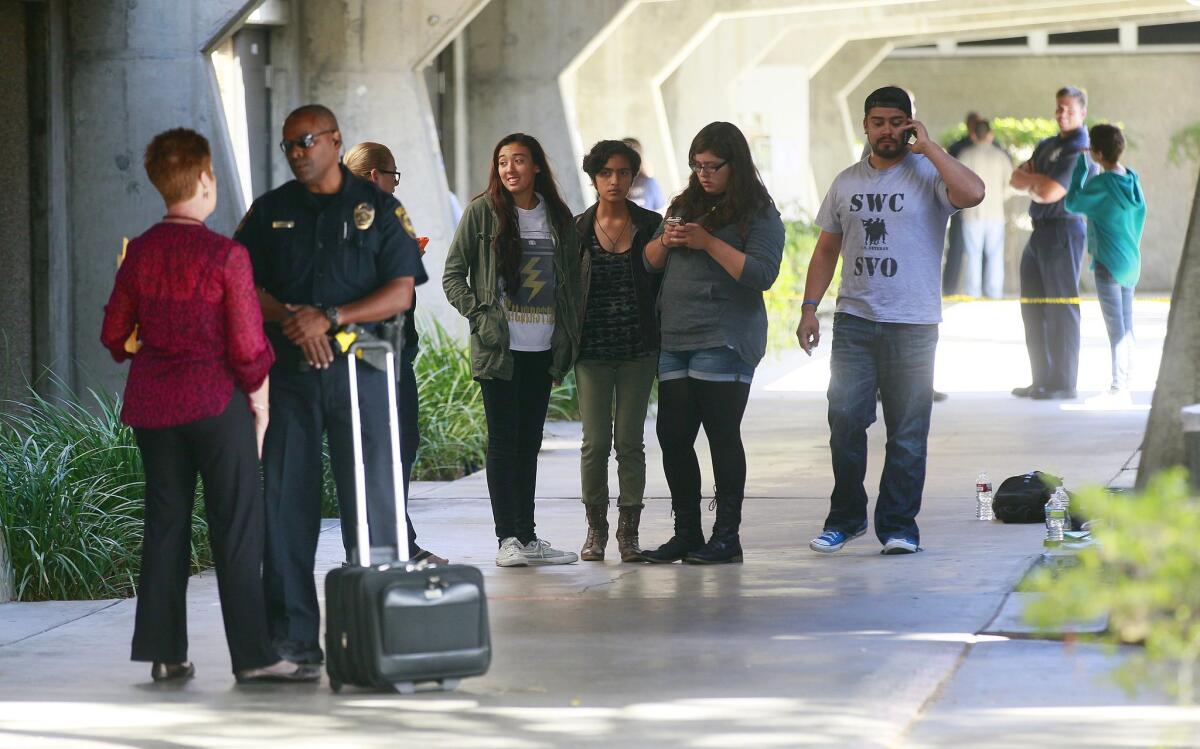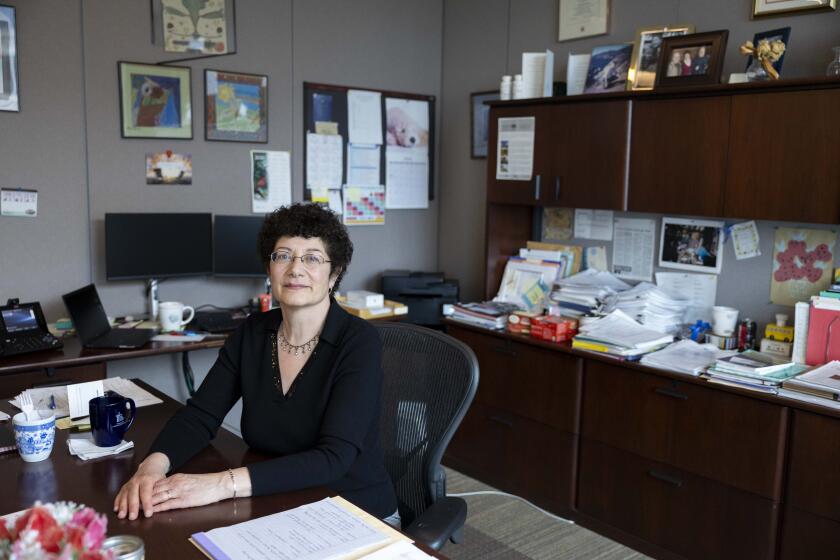College student’s lie causes Ebola scare
A student said she made up the story that she and her sick sister shared a plane with a Dallas nurse who was later diagnosed with Ebola -- a tale that prompted a classroom building to be cordoned off Thursday, a Southwestern College official said.
The student told a faculty member that she had missed classes because her sister was hospitalized with flu-like symptoms after she and her family shared a flight with a nurse later diagnosed with Ebola, college spokeswoman Lillian Leopold said. The student claimed she and her family had been quarantined. Actually, the student's sister was home with a cold after the trip and the family had never shared a flight with the infected nurse.
The result: the 470 building, where the student was at the time, was closed off for several hours in "an abundance of caution," and the area was cordoned off with yellow caution tape, Leopold said. Students behind the tape were told not to leave by campus security officers and campus health services was notified. Media descended on the community college campus.
Fears in the U.S. over Ebola have grown stronger this week with the news that two nurses were infected while treating an Ebola patient in Dallas who later died.
The Southwestern student was not exhibiting any flu-like symptoms and was thoroughly examined by a college nurse. Members of the county's Public Health Services department also told college officials no hospital in the county reported anyone was being investigated or quarantined for Ebola. The all-clear message was given about 1 p.m.
"Our campus nurse has thoroughly examined the student and there's no expectation of Ebola," Leopold said at the time.
Students said they were being kept together in small groups outside closed classrooms after the building was taped off.
"We are detained," Vinnie Avia-Walker, 25, said shortly before noon. "We are within a 20-feet area between the person who is sick and then an officer who is telling us not to leave."
Leopold said that everyone was removed from the building but that no one was under quarantine. Food and water were provided and everyone had access to restrooms.

"Southwestern College is OK. We acted as fast as we could," Southwestern College Police Chief Michael Cash said in a televised news conference shortly before noon.
College officials initially said the county Health Department had been notified as a precaution and health officials were on their way to assess the situation. However, Leopold later said that information was inaccurate and health officials did not go to the campus.
The student recanted her story about 1:45 p.m. When asked whether the student would face any consequences, Leopold said college officials are investigating the entire incident and how it relates to the college's student policy.
 | Virus life cycle 1. Virus present in host seeks out healthy cells. |
 | 2.Virus invades cell and injecting RNA |
 | 3. Virus’ RNS duplicates in host cell |
 | 4. Host cell is damaged, duplicated virus’ leave cell in search of new host cells. |
Initial symptoms: • Fever |  |
Advanced symptoms: • Nausea and vomiting |  |
Ebola is transmitted into the human population by:
• Blood or bodily fluids of infected animals
• Blood or bodily fluids of infected humans
• Contaminated objects such as unsterilized medical equipment or used needles and syringes
Sources: World Health Organization; Centers for Disease Control and Prevention; Mayo Clinic
Get Essential San Diego, weekday mornings
Get top headlines from the Union-Tribune in your inbox weekday mornings, including top news, local, sports, business, entertainment and opinion.
You may occasionally receive promotional content from the San Diego Union-Tribune.










